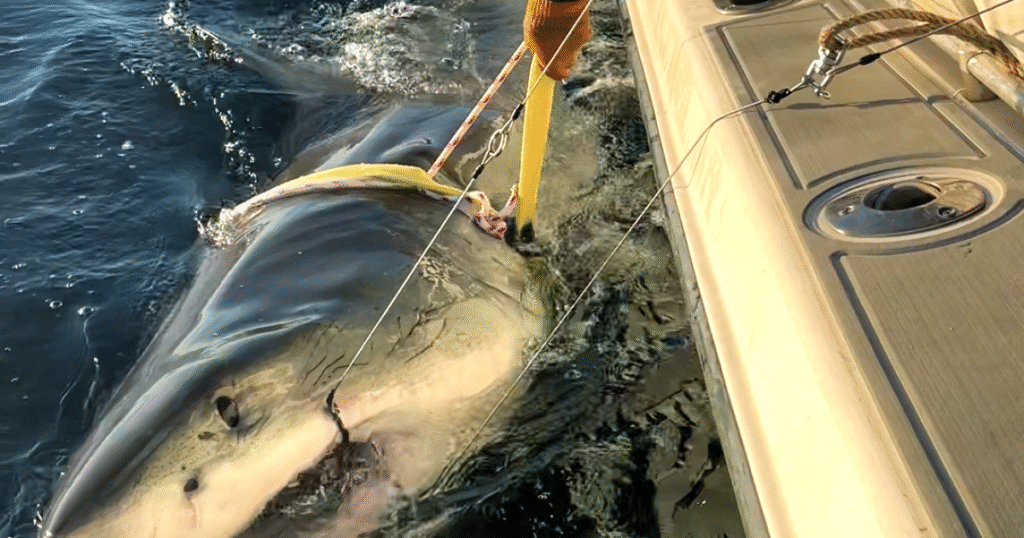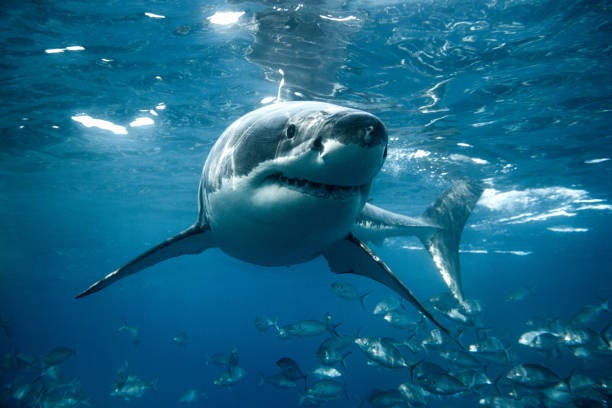People who consider the surf of the Atlantic Ocean to be the prime spot for vacationing might as well just get used to the fact that shark sightings have become more prevalent than ever; and the sharks were there first.
The good news is that while shark sightings are on the rise, shark attacks have not increased correspondingly.
According to the Florida Museum, unprovoked attacks are actually down with only 47 occurrences in 2024. Florida usually has around 70 in any given year. Florida is the shark bite capital of North America.
Sharks remain some of the most endangered species on the planet.
Repeated sightings have been reported all along the Florida and Georgia coastline, Hilton Head and Margaret’s Vineyard all the way to Boston, leading many to question if there are more sharks, or perhaps, there are more people filming them with cell phone cameras and drones.
Experts and researchers all agree there seem to be more sharks plying the oceans near popular beaches, but they differ as to the reason for the uptick.
Some experts blame global climate change as causing the waters on the East coast to become warmer.
According to a study in Scientific Reports, “increasing sea surface temperatures over the past 20 years have coincided with a five-fold increase in the abundance of juvenile bull sharks in Mobile Bay, an estuary in Alabama.”
However, other researches, specifically those at the National Oceanographic and Atmospheric Administration’s fisheries (NOAA), say that a couple of degrees in temperature change are not enough to cause a massive migration change among a species that have inhabited the earth for millions of years.

Also, it is pointed out that bull sharks have an extremely wide range and can live in brackish and fresh waters and are frequently seen in rivers way past the delta.
The most agreed up reason among scientists is that we are seeing more of them because there are more of them. Conservation spearheaded by NOAA and others which has limited overfishing for several decades and the result, naturally, is more sharks.
MORE: Strong mayor, law enforcement merger motions fizzle
According to NOAA, sharks have a much slower growth rate than similar species with some varieties not reaching sexual maturity until age 20 or older, making it harder to gauge just how many sharks there are out there. Researchers say that even a small uptick in their numbers is a good sign because, as an apex predator, they help control the numbers of species all down the food chain.
One way scientists are learning more is by tagging sharks and following their movements using sophisticated equipment.
Currently the non-profit group OCEARCH is following “Contender,” a massive 1,653 pound 14-foot white shark, thought to be the largest of its kind in existence.
The beast’s tracker pings whenever his dorsal fin breaches the surface while a satellite is overhead and allows researchers to follow the migration habits of the shark as well as its vital statistics. One bit of evidence they have discovered is that sharks will move in such a manner as to cause schools of bait fish to swim closer to shore, hemming the in and making it easier to plow the ocean and feed.
Contender was last spotted around 30 miles from Cape Cod.
Scott Hudson is the Senior Investigative Reporter, Editorial Page Editor and weekly columnist for The Augusta Press. Reach him at scott@theaugustapress.com











